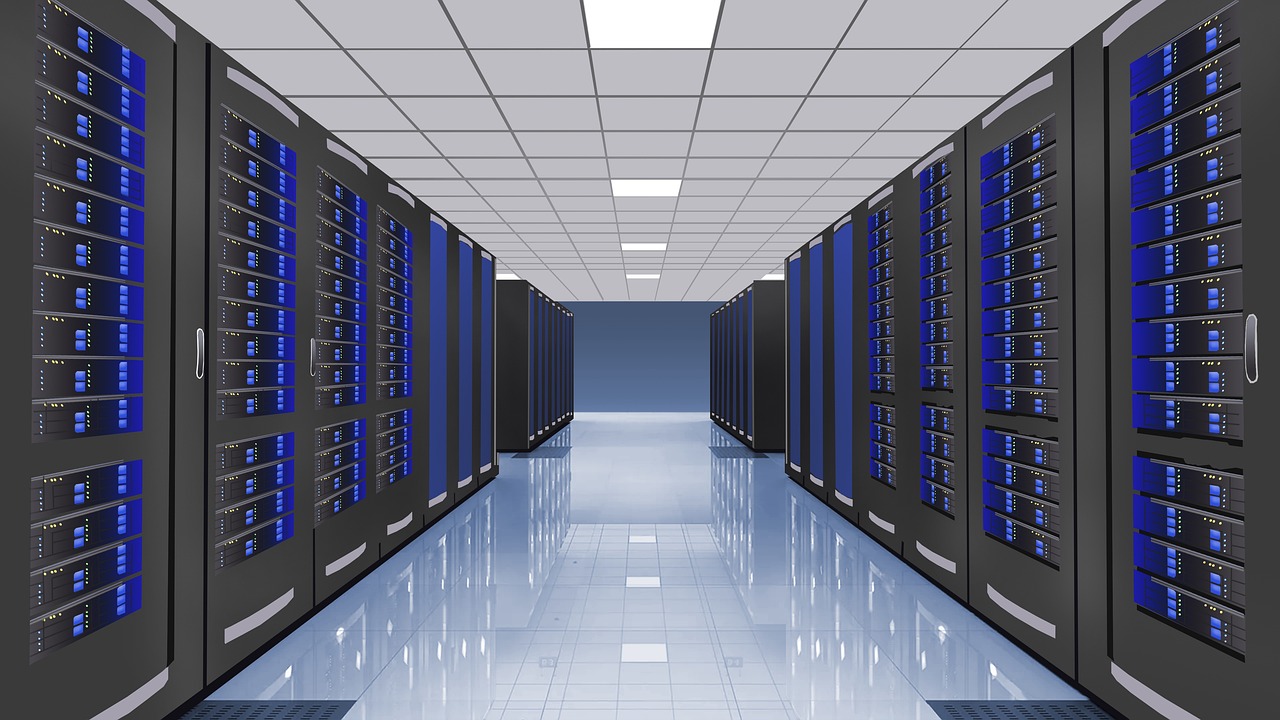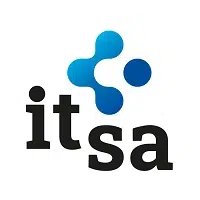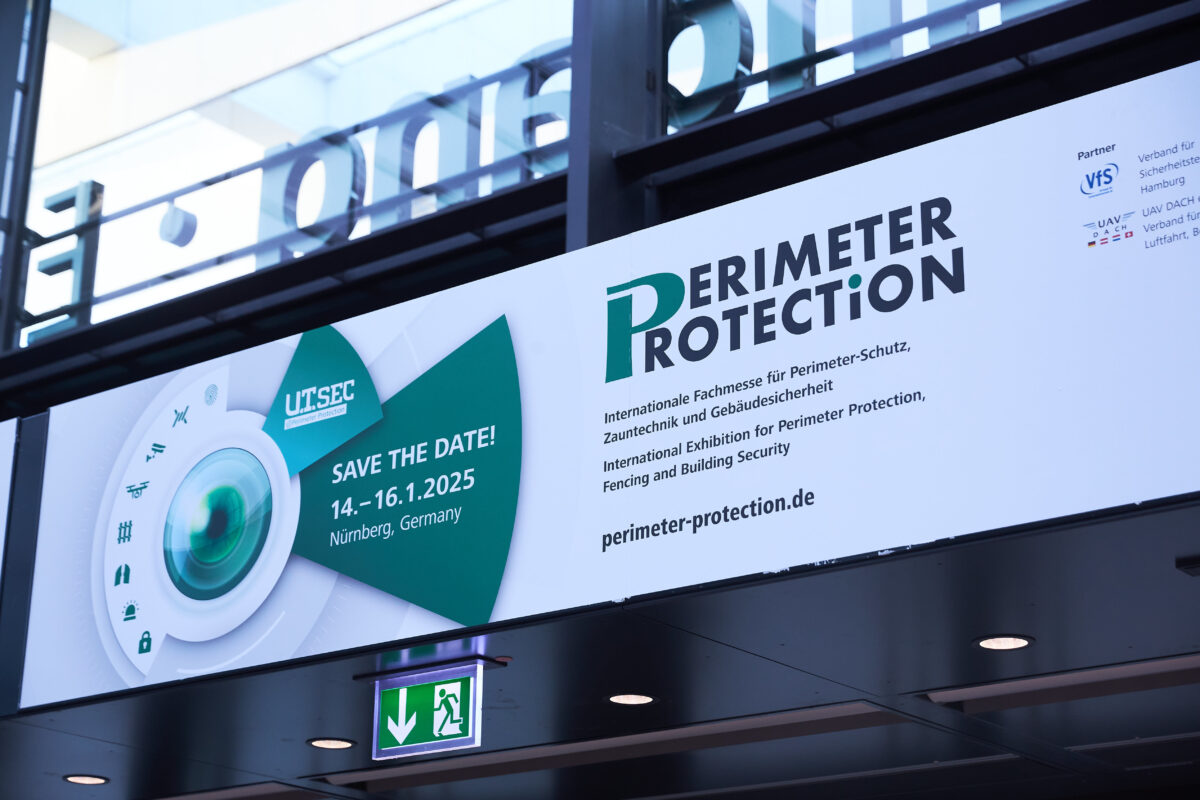
Latest NEWS
Safeguarding the Digital Frontier: Unveiling the Top 5 Key Trends at it-sa Nuremberg 2024

IT-SA Nuremberg 2024: A Comprehensive Overview of Cybersecurity and Data Protection Solutions

First and foremost, one of the key trends at IT-SA Nuremberg 2024 was the rise of artificial intelligence (AI) in cybersecurity. AI has become an indispensable tool in detecting and preventing cyber threats. With its ability to analyze vast amounts of data and identify patterns, AI can quickly identify potential vulnerabilities and respond to attacks in real-time. This technology is revolutionizing the way organizations protect their digital assets, providing a proactive approach to cybersecurity.
Another trend that emerged at IT-SA Nuremberg 2024 was the increasing focus on cloud security. As more businesses migrate their operations to the cloud, ensuring the security of data stored in these environments becomes paramount. Cloud security solutions showcased at the event offered advanced encryption, access controls, and threat detection mechanisms to safeguard sensitive information. With the ability to scale and adapt to changing needs, these solutions provide organizations with a secure and flexible infrastructure.
In addition to AI and cloud security, IT-SA Nuremberg 2024 also highlighted the importance of user awareness and education in cybersecurity. Despite the advancements in technology, human error remains one of the biggest vulnerabilities in any organization’s security posture. Therefore, educating employees about best practices, such as strong password management and recognizing phishing attempts, is crucial. The event showcased various training programs and tools designed to enhance user awareness and create a culture of cybersecurity within organizations.
Furthermore, IT-SA Nuremberg 2024 shed light on the growing significance of threat intelligence in cybersecurity. Threat intelligence involves gathering and analyzing data about potential threats and attackers to proactively identify and mitigate risks. By leveraging threat intelligence platforms, organizations can stay one step ahead of cybercriminals, understanding their tactics and motivations. This enables them to implement effective countermeasures and protect their digital assets.
Last but not least, IT-SA Nuremberg 2024 emphasized the need for collaboration and information sharing in the cybersecurity community. Cyber threats are not limited to individual organizations but can affect entire industries or even nations. Therefore, fostering collaboration among industry experts, government agencies, and academia is crucial in combating cybercrime effectively. The event provided a platform for networking and knowledge exchange, enabling participants to learn from each other’s experiences and collectively work towards a safer digital future.
In conclusion, IT-SA Nuremberg 2024 showcased the top 5 key trends in cybersecurity and data protection. From the rise of AI and cloud security to the importance of user awareness, threat intelligence, and collaboration, the event highlighted the need for organizations to stay vigilant and proactive in safeguarding the digital frontier. By embracing these trends and implementing the latest solutions, organizations can strengthen their security posture and protect their valuable digital assets from ever-evolving cyber threats.
Exploring the Latest Advancements in Cloud Security and Secure Cloud Computing at IT-SA Nuremberg 2024
The digital landscape is constantly evolving, and with it comes the need for robust security measures to protect sensitive information. As technology advances, so do the methods used by cybercriminals to breach security systems. This is why events like it-sa Nuremberg are crucial in keeping up with the latest trends and advancements in cloud security and secure cloud computing.
At IT-SA Nuremberg 2024, industry experts and professionals gathered to discuss and showcase the top trends in cloud security. These trends are shaping the future of digital security and are essential for organizations to stay ahead of potential threats.
One of the key trends unveiled at IT-SA Nuremberg 2024 is the increasing adoption of artificial intelligence (AI) in cloud security. AI has the ability to analyze vast amounts of data and identify patterns that may indicate a security breach. By leveraging AI, organizations can proactively detect and respond to threats, minimizing the risk of a successful attack.
Another significant trend is the rise of zero-trust security models. Traditionally, organizations relied on perimeter-based security, assuming that once inside the network, users and devices were trusted. However, with the increasing number of remote workers and the proliferation of connected devices, this approach is no longer sufficient. Zero-trust security models assume that no user or device should be trusted by default, and access is granted on a need-to-know basis. This approach provides an additional layer of security, ensuring that only authorized users can access sensitive data.
Cloud-native security is also gaining traction as organizations increasingly rely on cloud services. Cloud-native security refers to security measures specifically designed for cloud environments, taking into account the unique challenges and requirements of cloud computing. This trend emphasizes the importance of integrating security into the development and deployment of cloud-based applications and services, rather than treating it as an afterthought.
In addition to these trends, it-sa Nuremberg 2024 highlighted the growing importance of data privacy and compliance. With the implementation of regulations such as the General Data Protection Regulation (GDPR) and the California Consumer Privacy Act (CCPA), organizations are under increasing pressure to protect the privacy of their customers’ data. This trend emphasizes the need for robust data protection measures, including encryption, access controls, and data anonymization.
Lastly, it-sa Nuremberg 2024 showcased the advancements in secure cloud computing. Secure cloud computing refers to the integration of security measures into cloud services, ensuring the confidentiality, integrity, and availability of data stored and processed in the cloud. This trend highlights the importance of selecting cloud service providers that prioritize security and offer robust security features, such as data encryption, secure access controls, and regular security audits.
In conclusion, it-sa Nuremberg 2024 unveiled the top trends in cloud security and secure cloud computing. These trends, including the adoption of AI, zero-trust security models, cloud-native security, data privacy and compliance, and secure cloud computing, are shaping the future of digital security. By staying informed and implementing these trends, organizations can safeguard their digital frontier and protect sensitive information from evolving cyber threats.
Harnessing the Power of AI and Machine Learning in Security Technologies: Insights from IT-SA Nuremberg 2024
The digital landscape is constantly evolving, and with it, the need for robust security measures becomes increasingly important. As technology advances, so do the threats that lurk in the digital frontier. To stay ahead of these threats, it is crucial to harness the power of artificial intelligence (AI) and machine learning (ML) in security technologies. At the recent IT-SA Nuremberg 2024 conference, industry experts unveiled the top five key trends in this field.
First and foremost, AI and ML are revolutionizing the way we detect and respond to cyber threats. Traditional security systems rely on predefined rules and signatures to identify malicious activities. However, these methods are often ineffective against new and sophisticated attacks. AI and ML, on the other hand, have the ability to learn from vast amounts of data and adapt their algorithms accordingly. This enables them to detect anomalies and patterns that may indicate a cyber attack, even if it has never been seen before.
Another key trend highlighted at IT-SA Nuremberg 2024 is the use of AI and ML in threat intelligence. With the ever-increasing volume of data generated by organizations, it is becoming increasingly difficult to manually analyze and interpret this information. AI and ML can automate this process, allowing security teams to quickly identify and prioritize potential threats. By leveraging these technologies, organizations can stay one step ahead of cybercriminals and proactively defend their digital assets.
Furthermore, AI and ML are being utilized to enhance user authentication and access control systems. Traditional methods such as passwords and two-factor authentication are no longer sufficient to protect sensitive information. AI and ML can analyze user behavior patterns and biometric data to create more secure and seamless authentication processes. This not only improves security but also enhances the user experience by eliminating the need for cumbersome authentication procedures.
In addition to these advancements, AI and ML are also being employed in the field of security analytics. The sheer volume of security logs and alerts generated by organizations can overwhelm security teams, making it difficult to identify genuine threats amidst the noise. AI and ML can automate the analysis of these logs, flagging suspicious activities and prioritizing alerts based on their severity. This enables security teams to focus their efforts on the most critical threats, improving response times and minimizing the risk of a successful cyber attack.
Lastly, AI and ML are playing a crucial role in the development of autonomous security systems. As the digital landscape becomes increasingly complex, organizations are turning to AI and ML to create self-learning security systems that can adapt and respond to emerging threats in real-time. These autonomous systems can continuously monitor network traffic, detect anomalies, and take immediate action to mitigate potential risks. By reducing human intervention, organizations can improve the efficiency and effectiveness of their security operations.
In conclusion, the top five key trends unveiled at IT-SA Nuremberg 2024 highlight the immense potential of AI and ML in security technologies. From revolutionizing threat detection to enhancing user authentication and access control, these technologies are reshaping the way we safeguard the digital frontier. By harnessing the power of AI and ML, organizations can stay ahead of cyber threats and protect their valuable digital assets. As technology continues to advance, it is imperative that organizations embrace these trends and leverage AI and ML to fortify their security defenses.
Safeguarding the Digital Frontier: IoT Security and Connected Device Protection at IT-SA Nuremberg 2024
The digital frontier is expanding at an unprecedented rate, with the Internet of Things (IoT) and connected devices becoming an integral part of our daily lives. However, with this rapid growth comes the need for robust security measures to safeguard our digital assets. This is where IT-SA Nuremberg 2024 comes into play, as it unveils the top 5 key trends in IoT security and connected device protection.
First and foremost, the rise of artificial intelligence (AI) and machine learning (ML) is revolutionizing the way we approach cybersecurity. With the ability to analyze vast amounts of data and identify patterns, AI and ML algorithms can detect and mitigate potential threats in real-time. This proactive approach to security is crucial in an era where cyberattacks are becoming increasingly sophisticated.
Another key trend at IT-SA Nuremberg 2024 is the emergence of blockchain technology as a means of securing IoT devices. Blockchain, most commonly associated with cryptocurrencies, offers a decentralized and tamper-proof system that can enhance the security of connected devices. By utilizing blockchain, IoT devices can securely communicate and authenticate with each other, reducing the risk of unauthorized access.
Furthermore, the concept of zero-trust security is gaining traction in the realm of IoT security. Traditionally, security measures were focused on protecting the perimeter of a network. However, with the proliferation of connected devices, the perimeter has become increasingly porous. Zero-trust security operates on the principle of “never trust, always verify,” requiring continuous authentication and authorization for every device and user attempting to access the network. This approach ensures that even if one device is compromised, the rest of the network remains secure.
In addition to these technological advancements, IT-SA Nuremberg 2024 also highlights the importance of collaboration between industry stakeholders. With the interconnected nature of IoT devices, it is crucial for manufacturers, service providers, and end-users to work together to establish and maintain robust security standards. This collaborative effort can help identify vulnerabilities, share best practices, and develop innovative solutions to address emerging threats.
Lastly, the conference emphasizes the need for ongoing education and awareness in the field of IoT security. As technology continues to evolve, so do the tactics employed by cybercriminals. It is essential for individuals and organizations to stay informed about the latest threats and security measures. By attending conferences like IT-SA Nuremberg 2024, participants can gain valuable insights from industry experts, engage in discussions, and stay ahead of the curve in safeguarding the digital frontier.
In conclusion, IT-SA Nuremberg 2024 sheds light on the top 5 key trends in IoT security and connected device protection. From the integration of AI and ML to the utilization of blockchain technology, these trends are shaping the future of cybersecurity. Additionally, the emphasis on zero-trust security, collaboration, and ongoing education underscores the importance of a holistic approach to safeguarding the digital frontier. As the digital landscape continues to evolve, it is imperative that we stay vigilant and proactive in protecting our digital assets.
Unveiling the Latest Trends in Threat Intelligence and Security Analytics at IT-SA Nuremberg 2024
The digital landscape is constantly evolving, and with it, the threats that organizations face. As technology advances, so do the tactics of cybercriminals. In order to stay one step ahead, it is crucial for businesses to stay informed about the latest trends in threat intelligence and security analytics. One event that provides a platform for this knowledge sharing is IT-SA Nuremberg, a leading trade fair for IT security. In this article, we will unveil the top 5 key trends that were showcased at IT-SA Nuremberg 2024.
The first trend that emerged at IT-SA Nuremberg 2024 is the increasing importance of artificial intelligence (AI) in threat intelligence and security analytics. AI has the ability to analyze vast amounts of data in real-time, enabling organizations to detect and respond to threats more effectively. With the rise of sophisticated cyber attacks, AI-powered solutions are becoming essential in the fight against cybercrime.
Another key trend highlighted at IT-SA Nuremberg 2024 is the growing adoption of cloud-based security solutions. As more businesses move their operations to the cloud, the need for robust security measures becomes paramount. Cloud-based security solutions offer scalability, flexibility, and enhanced protection against cyber threats. This trend reflects the shift towards a more agile and interconnected digital ecosystem.
The third trend unveiled at IT-SA Nuremberg 2024 is the increasing focus on proactive threat hunting. Traditional security measures often rely on reactive approaches, waiting for an attack to occur before taking action. However, with the ever-evolving threat landscape, organizations are realizing the importance of actively searching for potential threats. Proactive threat hunting involves continuously monitoring networks, analyzing data, and identifying potential vulnerabilities before they can be exploited.
Next, IT-SA Nuremberg 2024 showcased the rising significance of user behavior analytics (UBA) in threat intelligence. UBA leverages machine learning algorithms to analyze user behavior patterns and detect anomalies that may indicate a security breach. By monitoring user activities, organizations can identify suspicious behavior and take immediate action to mitigate potential risks. This trend highlights the importance of understanding the human element in cybersecurity.
Lastly, IT-SA Nuremberg 2024 shed light on the emerging trend of integrating threat intelligence and security analytics into a unified platform. Traditionally, these two areas have been treated as separate entities, but the increasing complexity of cyber threats calls for a more holistic approach. By integrating threat intelligence and security analytics, organizations can gain a comprehensive view of their security posture and respond more effectively to potential threats.
In conclusion, IT-SA Nuremberg 2024 provided valuable insights into the latest trends in threat intelligence and security analytics. From the increasing role of AI and cloud-based solutions to the importance of proactive threat hunting and user behavior analytics, organizations are constantly adapting to the evolving threat landscape. By staying informed about these trends and implementing the necessary measures, businesses can safeguard their digital frontier and protect themselves against cyber threats.




